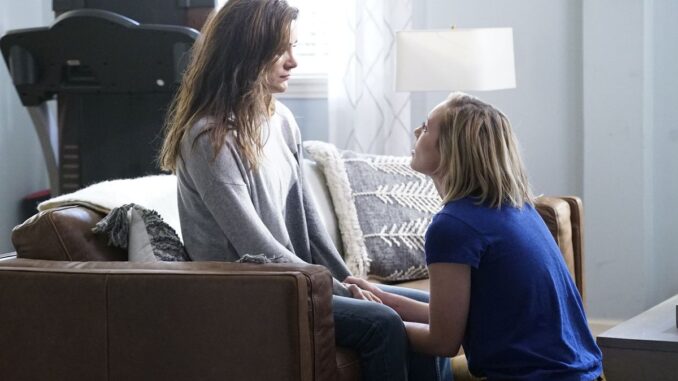
Beyond the Rainbow: Why This TV Crossover is a Landmark Moment for LGBTQ+ Representation
Television, for decades, has mirrored society, holding up a distorted reflection of our world back at us. For the LGBTQ+ community, that reflection has often been hazy, incomplete, or downright harmful. Stock characters, tired tropes, and sidekick roles have been the norm. But recently, a shift has begun. And this TV crossover, whatever specific show it may be – think "Station 19" and "Grey's Anatomy" seamlessly blending their stories, or "The Flash" meeting "Supergirl" with a shared, queer-centric plot – is not just another step, it's a leap forward, a historical moment for LGBTQ+ representation that you simply cannot afford to miss.
This isn't just about ticking boxes for inclusivity; it's about crafting authentic narratives that resonate with a community long relegated to the margins. For too long, LGBTQ+ characters have been relegated to isolated storylines, their experiences often separated from the "mainstream" narrative. The power of a crossover lies in its ability to shatter these artificial barriers. By seamlessly weaving these characters into the fabric of another show, it normalizes their existence, demonstrating that LGBTQ+ individuals are integral parts of the larger human experience, capable of heroism, heartbreak, and everything in between.
Imagine a scene: a queer doctor from "Grey's Anatomy," whose romantic life has been explored with depth and nuance, advising a young, questioning firefighter from "Station 19" on navigating the challenges of coming out in a hyper-masculine environment. This isn’t just a cameo; it's a mentorship moment, a beacon of hope illuminating the path for young viewers struggling with their own identities. This is the kind of representation that transcends entertainment; it's about providing visibility, fostering understanding, and ultimately, saving lives.
The significance of this crossover also lies in its potential to reach a wider audience. By embedding LGBTQ+ characters and storylines into established shows with loyal fan bases, it exposes viewers who might otherwise avoid explicitly queer content to authentic and compelling representations. It challenges preconceived notions, dismantles stereotypes, and fosters empathy. Consider a viewer who has never consciously engaged with LGBTQ+ issues becoming invested in a lesbian couple from "The Flash" who are suddenly thrust into the shared universe of "Supergirl" and must work together to save the world. This crossover allows these stories to become seamlessly integrated into the larger narrative, showing viewers that love is love, heroism is heroism, regardless of sexual orientation or gender identity.
Furthermore, this crossover speaks to the growing confidence and power of LGBTQ+ creators within the entertainment industry. Their voices are finally being heard, their stories are being championed, and they are demanding representation that is both accurate and empowering. This crossover isn't just a network executive's attempt to appease a demographic; it's a testament to the hard work and dedication of LGBTQ+ artists and activists who have tirelessly fought for their stories to be told.
However, it's crucial to remember that representation is not a monolith. One crossover, no matter how groundbreaking, cannot solve all the problems of LGBTQ+ representation. We need diverse stories reflecting the myriad experiences within the community, from transgender narratives to asexual representation, from queer people of color to disabled LGBTQ+ individuals. The challenge lies in ensuring that this crossover serves as a stepping stone, paving the way for even more nuanced, authentic, and inclusive storytelling in the future.
In conclusion, this TV crossover is more than just a ratings grab or a publicity stunt; it's a landmark moment for LGBTQ+ representation. It's a chance to see ourselves reflected in the mainstream, to have our stories validated, and to feel a sense of belonging in a world that hasn't always made space for us. By weaving LGBTQ+ characters into the fabric of established shows, it normalizes their existence, fosters empathy, and opens the door for even greater representation in the future. Don't miss this crossover. Watch it, discuss it, and let it be a catalyst for a future where LGBTQ+ stories are not just tolerated, but celebrated, enriching the tapestry of television and reflecting the vibrant diversity of our world. Because in the end, representation matters, and this crossover is making history, one frame at a time.
